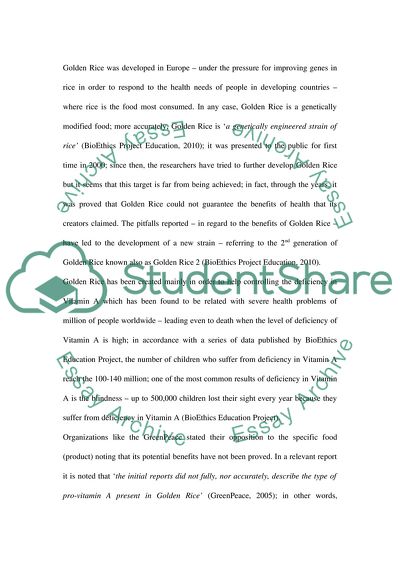Cite this document
(The Golden Rice Methods and Methodology Essay Example | Topics and Well Written Essays - 2500 words, n.d.)
The Golden Rice Methods and Methodology Essay Example | Topics and Well Written Essays - 2500 words. Retrieved from https://studentshare.org/environmental-studies/1570432-golden-rice-report-environmental-biotechnology-course
The Golden Rice Methods and Methodology Essay Example | Topics and Well Written Essays - 2500 words. Retrieved from https://studentshare.org/environmental-studies/1570432-golden-rice-report-environmental-biotechnology-course
(The Golden Rice Methods and Methodology Essay Example | Topics and Well Written Essays - 2500 Words)
The Golden Rice Methods and Methodology Essay Example | Topics and Well Written Essays - 2500 Words. https://studentshare.org/environmental-studies/1570432-golden-rice-report-environmental-biotechnology-course.
The Golden Rice Methods and Methodology Essay Example | Topics and Well Written Essays - 2500 Words. https://studentshare.org/environmental-studies/1570432-golden-rice-report-environmental-biotechnology-course.
“The Golden Rice Methods and Methodology Essay Example | Topics and Well Written Essays - 2500 Words”, n.d. https://studentshare.org/environmental-studies/1570432-golden-rice-report-environmental-biotechnology-course.


